
Citroen C3 Mk2 used car buying guide: French without tears?
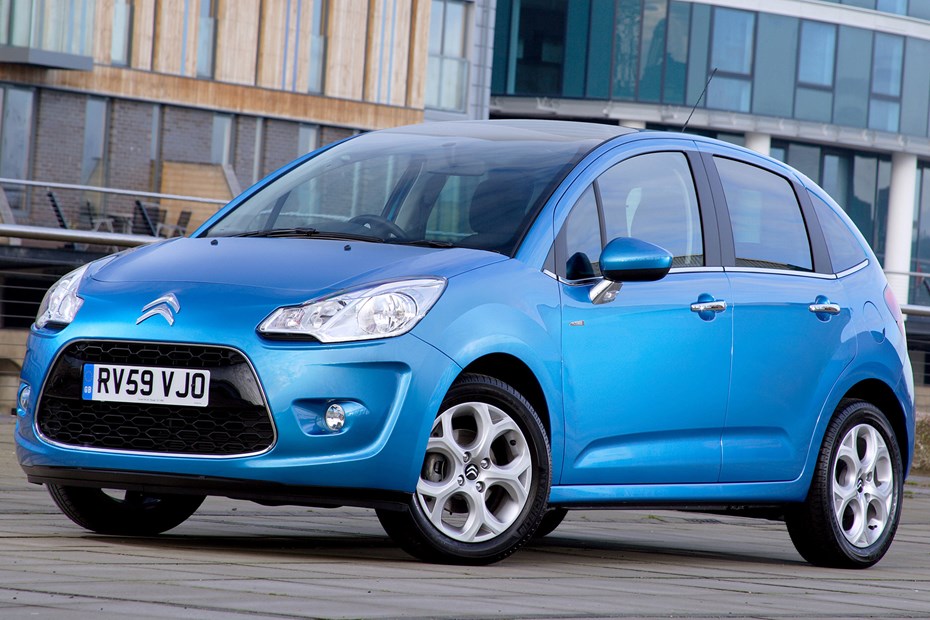
At a glance
| Price new | £10,770 - £17,890 |
|---|---|
| Used prices | £325 - £4,325 |
| Road tax cost | £20 - £265 |
| Insurance group | 5 - 21 |
Get an insurance quote with

|
|
| Fuel economy | Not tested to latest standards |
| Range | 462 - 913 miles |
| Number of doors | 5 |
| View full specs for a specific version | |
Available fuel types
Petrol
Diesel
Pros & cons
- Refined and quiet
- Forgiving ride
- Low running costs
- Not as fun to drive as rivals
- Emissions system failures
- Not that easy to find
Citroën C3 (10-16) rivals
Overview
Few cars achieve the kind of giant leap forward in quality, style and sophistication that Citroen managed with the second generation C3. Launched in 2010, this compact five-door hatchback is an excellent used car. As an alternative to a Renault Clio or Ford Fiesta it offers a couple of unique features and a solid range of petrol and diesel engines to choose from.
The C3 inherits its sophisticated, chic style and good levels of refinement from the DS 3, which had to be good – it was the starting point of a new luxury brand. However, it remained as affordable and accessible as the original Citroen C3. On all but the most basic models, Citroen’s panoramic Zenith windscreen gives an expansive, open-air feel, and the range includes low-emission diesel and smooth petrol engine options.
At a time when many superminis were leaning towards sportier handling, the Citroen C3 Mk2 focused on refinement and comfort. As such, it’s a smooth, calm motorway car with impressive cruising ability, but less involving through bends than a Peugeot 208 or Seat Ibiza. On the other hand, it is good at absorbing small road imperfections, and has a built-in scent diffuser.
Citroen C3 Mk2 used car buying guide
If the Citroen C3 has made your small car shortlist, you might be in for a treat – if you can find one. When browsing used cars for sale, the 2010-16 Citroen C3 is a rare find. It was a strong seller with good deals and discounts when new. Perhaps owners just don’t want to part with them.
The cars that are for sale (from dealers and the wider market) look like excellent value. They are among the best used cars for £3,000 where you’ll a good choice of less than 10-year old, low mileage, and very presentable examples.
The best used Citroen C3 Mk2 to buy is probably the 1.2-litre PureTech petrol. Offered with 82hp, or turbocharged 110hp outputs, as a completely new design when introduced at the end of 2014 it does have a few quirks to watch out for (covered below) but is economical and suits the car well. The oldest ULEZ compliant diesel is the 1.6-litre BlueHDi Exclusive – only the BlueHDi models are Euro 6.
Which used Citroen C3 Mk2 should be avoided?
Looking at the survival rates, the early 1.6-litre HDi is probably the one most likely to become uneconomical to repair or break down. This might be influenced by scrappage schemes and low residual values, but the author of this guide notes that the 2010 C3 Airdream+ they bought new lasted just eight years, despite the first three being the sort of long-distance, high-speed use that this type of diesel thrives on.
Facelift models (e-HDi and BlueHDi) seem to fare better, and the survival rate of the 1.4-litre and 1.6-litre VTi petrol version is better than expected – though these engines do have inherent flaws that aren’t covered by recalls.
Before viewing a used Citroen C3 Mk2, get the registration number and check the MOT history online. That will also alert you to any outstanding recalls, and can give you shortcuts to parts of the car that might need inspecting based on past advisories. If there are odd gaps in the mileage or test dates, it’s worth getting a vehicle history check as well to make sure you’re not buying a write-off.
Citroen C3 Mk2 known faults and common problems
0. The Citroen C3 airbag recall
The 2025 Takata airbag recall affected all Citroen C3 Mk2s. It was a big one, too, with 120,000 C3s and DS3s in the UK alone affected. When looking at any prospective car, make sure the work’s been done, as without it, you’re buying a car with a stop-drive notice served on it, which leads to all sorts of insurance issues.
1. Diesel engines – general concerns and checks for HDi models
The majority of Citroen C3 Phase II (the official name) models sold in the UK are diesel – they were designed to attract low taxes and the fuel was cheap. It’s not just about cost; the C3 Airdream+ could realistically achieve 72mpg on steady motorway runs, yet had enough torque to carry five adults at motorway speeds without fuss.
All except the BlueHDi models of the last year of production are Euro 5, so they’re not ULEZ compliant – but they have diesel particulate filters (DPF) with diesel exhaust fluid (Eolys) and sophisticated emission controls tech. Check the service history for frequent oil changes and a timing belt change on both 1.4-litre and 1.6-litre models (the second cam on 16V models is chain driven) at 74,500 miles or five years, and if the car has been maintained perfectly it should also have had a new DPF at this time.
Before driving the car, with it resting on level ground, check the oil level – look at the oil condition and sniff for diesel fumes, particularly if the level is over the maximum mark on the dipstick. Listen for ‘chuffing’ or breathing noises from the top of the engine, and look/smell for diesel vapour around the injectors. Make sure the test drive includes some fast dual carriageway/motorway driving when the car is warmed up. It should pull well from low speeds in high gears, and feel smooth at higher speeds and cruising.
If it misfires, shudders or sounds like it’s struggling to get up to speed – particularly on 1.6-litre models – it could need a lot of work to get it back to full health.
2. Diesel manual cars – clutch and dual-mass flywheels
The Citroen C3’s clutch is self-adjusting, but when new it has quite a high biting point and a lot of travel. If it bites unusually low and snappily, the adjusting mechanism may be damaged – if it’s slow to engage or feels too high, the clutch may be nearing the end of its useful life.
All diesel models have a dual-mass flywheel, so feel for juddering and listen for clonks and rattles when pulling away and when changing gear under acceleration. If there’s a steady vibration when driving, it could be that the flywheel is on the way out – but engine mounts and suspension wear may feel similar.
3. 1.2-litre PureTech engine – 82hp/110hp
This all-new engine brought the facelifted Citroen C3 bang up to date, with a three-cylinder, efficient design that underpins most of the Stellantis range now. Early examples had problems with the ‘wet belt’ design – a cambelt intended to last the life of the car, that runs in oil.
The original belt was not correctly specified and would degrade and break down, shedding bits of belt into the engine. This is the subject of a recall, as it can – in some cases – block the brake booster pipework. Even if the recall has been done, the car won’t have had any work performed if the belt was within specification at the time.
You can get a handy tool for checking the width of the belt (if it is wider than spec, it’s absorbed oil and will fail) but you ideally want a car that has had the timing belt changed – or is cheap enough to budget for getting it done yourself.
4. Automatic gearbox – EGT (formerly SensoDrive)
Citroen can change the name, but most automatic C3s come with the much-maligned automated manual from the previous generation. Theoretically it should be a good, cheap and efficient solution for two-pedal driving – a conventional clutch and gearbox, and sophisticated controls to select gears and engage or disengage drive as needed. When it works, it’s pleasant – if a little slow to shift.
It should pull away smoothly and change up the gears quickly and quietly. Check that the manual controls work as well. It will not hold the car on a hill, but if you apply revs as you release the handbrake for a hill start it should be smooth. Cars with worn clutches or bad calibration may lurch, grab or jump; an excessively worn clutch is likely to cause an error rather than drive with perceptible slip.
Clutch wear can be severe as low as 50,000 miles. As the gearbox cannot slip the clutch or control the brakes the way a manual car might normally be drive, or hold on hills or reverse as an automatic’s torque convertor allows, reversing, parking and hill starts can be particularly tough on these gearboxes.
A diagnostic tool with Citroen-specific functions can usually reveal some information about the gearbox condition. Servicing is simple – it’s a conventional manual gearbox outside of the gear selector and clutch automation – and a responsible, skilled garage should be able to replace a worn clutch and recalibrate the gearbox to make it as good as new for much less than an automatic gearbox rebuild.
Citroen C3 EGT automatics that have been driven with a malfunctioning gearbox may have been subject to some very harsh driving, so check engine mounts and listen for rattles on full lock that could indicate damage to the driveshafts.
5. Air conditioning and climate control
Check the air conditioning works, and listen for the sound of the compressor being engaged. If it rumbles or sounds like an uneven beat over the engine’s noise, it may need a re-gas to replenish the oil, or it could just be worn to the point of needing replacement. A car that is low on refrigerant may hiss or make a rushing noise behind the dashboard.
If you suspect the air conditioning compressor is making a noise, it’s easiest to hear when leaning down and listening near the front driver’s side wheel, and switching the A/C on and off.
Verify all the buttons work on the control panel and that the fan works at all speeds – it’s a common failure on these and can burn the wiring loom if not repaired. There are two possibilities – either a repair costing less than £30 in parts that can be done in minutes, or a complete strip down and possible replacement of ECUs, heater modules or control panels. If a dealer is offering a car with a faulty fan, chances are it won’t be the cheap fix.
6. VTi petrol engines – 1.4-litre and 1.6-litre 16-valve timing chain
Pre-2014 16-valve petrol C3s (95hp, 120hp) use the ‘Prince’ engine co-developed with BMW. These use a timing chain rather than a belt. In theory this means lower maintenance, but unfortunately the components weren’t up to scratch, and they often suffer from failed timing chain tensioners and stretched chains.
Listen for a rattle on cold start, scraping or metallic noises when idling, and check for an engine malfunction light – a stretched chain can cause misfires. In the worst cases the timing chain guide can break up and block the oil pump pickup, wrecking the engine. Misfires can also be due to carbon build up and faulty injector wiring.
There are lots of guides online for keeping the Citroen/Peugeot EP6 version of this engine in good health, but if you don’t want to buy a project, walk away If it sounds rough at startup – find a different car. Be very suspicious of a car that’s been warmed up or is running when you view it.
7. Accident damage, lights and trim
Citroen C3s are popular first cars, and have also been used by driving schools, so take a pragmatic view when judging paintwork repairs on bumpers and check the wheels for scuffs or gouges on plastic trims or alloy wheel edges. Severe damage can also highlight the need to check the sidewalls of the tyres for cuts or bulges.
Check inside the boot floor to make sure the spare wheel is present and there’s no evidence of bodywork repair, such as cracked paint or obviously creased/rippled metal, or fresh seam sealer along joins. Examine the A-pillars and headlining for evidence of windscreen replacement as well (loose clips, damp staining, dirt and marks on light fabric), particularly on cars with the panoramic ‘Zenith’ windscreen.
Rear lights often have problems with condensation and damp inside the lens, whereas the headlights and day running lights may flicker or have misaligned bulbs if the car has been bumped. LED lights are more expensive to replace than conventional units, so negotiate accordingly if an otherwise good car has poor lights or lenses.
8. Handbrake issues
It’s quite common for the Citroen C3’s handbrake to be ineffective or stop working. Make sure it holds the car on a hill during a test drive (and this is also a good time to check for clutch slip when pulling away), and engages and releases easily.
Fortunately the handbrake is a conventional design and relatively easy to repair. You may want to budget for a rebuild and clean up of the rear brakes overall if there is a handbrake issue, since it’s likely that the mechanisms have seized or rusted from lack of use.
9. Citroen C3 suspension noises and squeaks
One attribute the C3 inherited from its predecessor is a tendency for noisy suspension when it gets worn. Squeaks at low speeds can be bump stops or anti-roll bar links and bushes, whereas bigger rattles and wandering are more likely to be the control arm bushes. Check for uneven tyre wear if the car feels ‘loose’.
If the steering is heavy or moves erratically it could be the strut top mounts – listen for grinding or creaking. It’s worth inspecting the front springs as they can break with age and pothole impacts; if you do find a damaged spring, check the inside edge of the tyre for damage.
10. Has the stop-start stopped starting?
The second generation C3 uses next-generation stop-start technology from Citroen. It follows the template of the original with a combined alternator-starter and a strong auxilliary belt plus substantial AGM battery, but uses a big supercapacitor in the front wing to smooth out the electrical demands of the rest of the car. If the lights flicker lots when it restarts, or the radio shuts off and comes back on, that’s a good indication that either the battery or capacitor are not up to scratch.
Stop-start should be checked when the car is at operating temperature with the heated rear window, heated seats if fitted, and defrost turned off. Cold weather and high electrical demands are supposed to prevent it operating.
The quickest check, though, is to make sure a big, AGM-type battery is installed and is in good condition. Squealing, whirring or shuddering indicates that the belt or tensioners are due to be replaced or have been damaged.
Be particularly cautious if buying a used Citroen C3 with stop-start right after flooding in the area it’s for sale in. The electrical components are vulnerable to damage if immersed and easily overlooked by part-time traders looking to make a quick profit on damaged-repairable cars.
What’s a Citroen C3 Mk2 like to live with?
Over the next few pages, we’ll review each aspect of the Citroen C3 Phase II, taking into account its practicality, comfort, fuel economy and performance. If you’re short on time, you can also skip to our verdict page to see if we recommend buying a used 2010-2016 Citroen C3 as your next car.



.jpg)
.jpg)
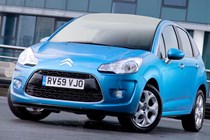



.jpg)

.jpg)
.jpg)

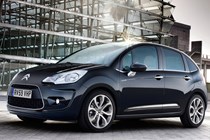

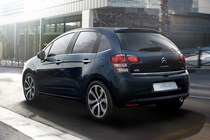
.jpg)
.jpg)
.jpg)
.jpg)
.jpg)
.jpg)
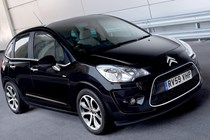
.jpg)
.jpg)

.jpg)
.jpg)


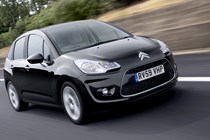

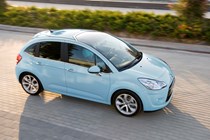
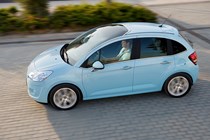

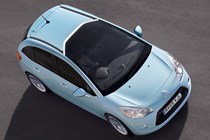



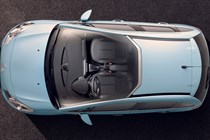
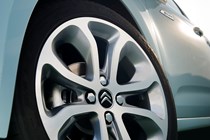
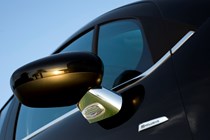
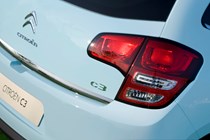
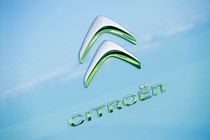
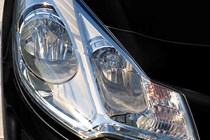

.jpg)
.jpg)
.jpg)
.jpg)
.jpg)
.jpg)
.jpg)
.jpg)
.jpg)
.jpg)
.jpg)
.jpg)
.jpg)
.jpg)
.jpg)
.jpg)
.jpg)
.jpg)
.jpg)
.jpg)
.jpg)
.jpg)
.jpg)
.jpg)
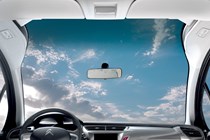
.jpg)
.jpg)
.jpg)

.jpg)
.jpg)

.jpg)
.jpg)
.jpg)
.jpg)
.jpg)
.jpg)
.jpg)
.jpg)
.jpg)
.jpg)
.jpg)
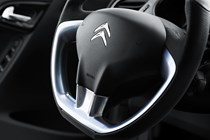
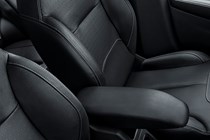

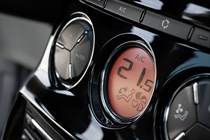
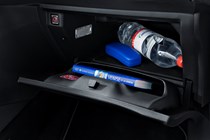
.jpg)
.jpg)
.jpg)
.jpg)
.jpg)
.jpg)
.jpg)
.jpg)
.jpg)
.jpg)
.jpg)
.jpg)
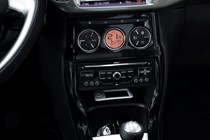
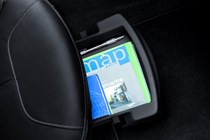
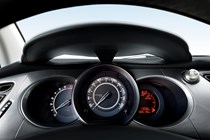
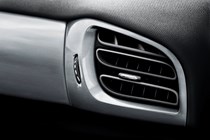
.jpg)
.jpg)
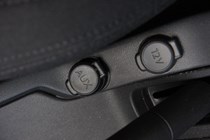
.jpg)
.jpg)
.jpg)
.jpg)
.jpg)
.jpg)
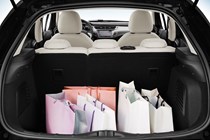
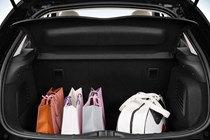
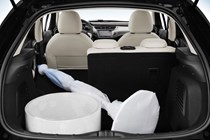
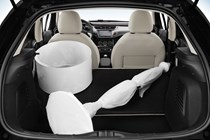
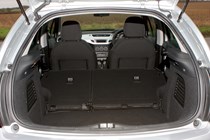
.jpg)
.jpg)
.jpg)
.jpg)
.jpg)
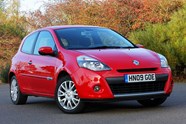
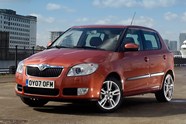
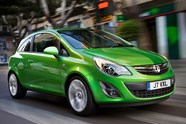

.jpg?quality=50)
.jpg?quality=50)




.jpg?quality=50)

.jpg?quality=50)
.jpg?quality=50)




.jpg?quality=50)
.jpg?quality=50)
.jpg?quality=50)
.jpg?quality=50)
.jpg?quality=50)
.jpg?quality=50)

.jpg?quality=50)
.jpg?quality=50)

.jpg?quality=50)
.jpg?quality=50)


















.jpg?quality=50)
.jpg?quality=50)
.jpg?quality=50)
.jpg?quality=50)
.jpg?quality=50)
.jpg?quality=50)
.jpg?quality=50)
.jpg?quality=50)
.jpg?quality=50)
.jpg?quality=50)
.jpg?quality=50)
.jpg?quality=50)
.jpg?quality=50)
.jpg?quality=50)
.jpg?quality=50)
.jpg?quality=50)
.jpg?quality=50)
.jpg?quality=50)
.jpg?quality=50)
.jpg?quality=50)
.jpg?quality=50)
.jpg?quality=50)
.jpg?quality=50)
.jpg?quality=50)

.jpg?quality=50)
.jpg?quality=50)
.jpg?quality=50)

.jpg?quality=50)
.jpg?quality=50)

.jpg?quality=50)
.jpg?quality=50)
.jpg?quality=50)
.jpg?quality=50)
.jpg?quality=50)
.jpg?quality=50)
.jpg?quality=50)
.jpg?quality=50)
.jpg?quality=50)
.jpg?quality=50)
.jpg?quality=50)





.jpg?quality=50)
.jpg?quality=50)
.jpg?quality=50)
.jpg?quality=50)
.jpg?quality=50)
.jpg?quality=50)
.jpg?quality=50)
.jpg?quality=50)
.jpg?quality=50)
.jpg?quality=50)
.jpg?quality=50)
.jpg?quality=50)




.jpg?quality=50)
.jpg?quality=50)

.jpg?quality=50)
.jpg?quality=50)
.jpg?quality=50)
.jpg?quality=50)
.jpg?quality=50)
.jpg?quality=50)





.jpg?quality=50)
.jpg?quality=50)
.jpg?quality=50)
.jpg?quality=50)
.jpg?quality=50)